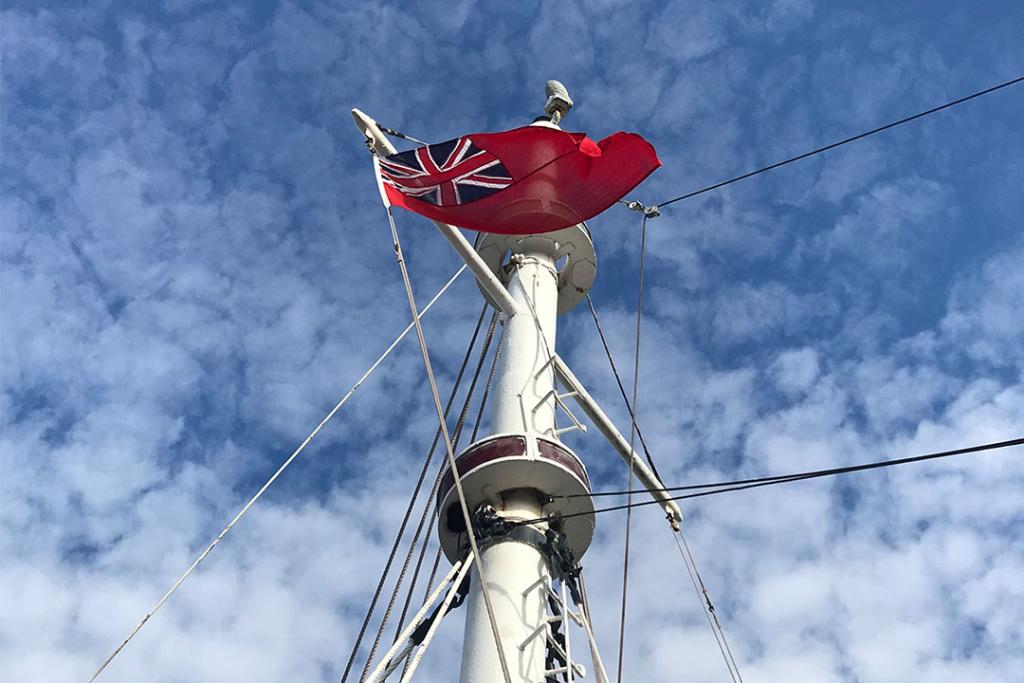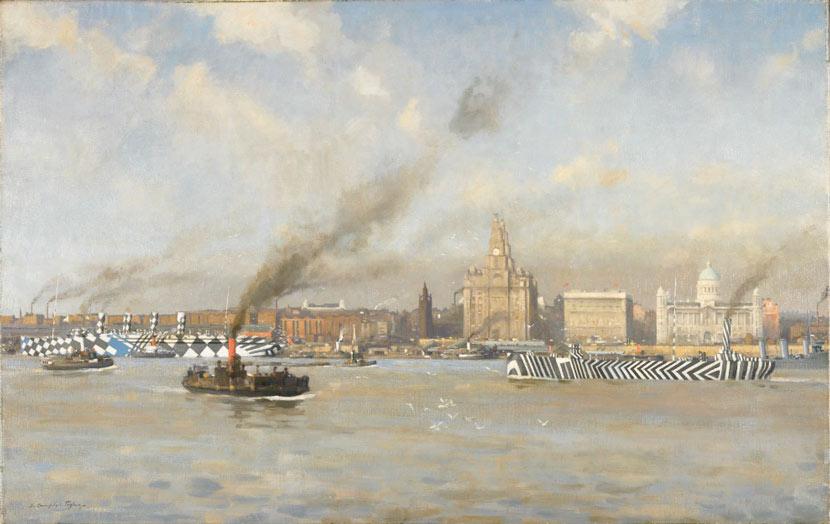Merchant Navy Day
3 September marks Merchant Navy Day, when we honour the brave men and women who made many sacrifices to keep Britain alive during both World Wars, and appreciate the UK’s modern day seafarers who are responsible for transporting most of our every day items, such as food and fuel. On this day the Red Ensign, the official Merchant Navy flag, is flown across the UK.

The Red Ensign
Merchant Navy was the title bestowed on the merchant shipping fleets by King George V, following their service in the First World War, and it encompasses all British commercial shipping. Far older than the title though is the flag that identifies the vessels.
The Red Ensign has been flown by British and English ships since as far back as the 17th century. In 1864 it was decided that merchant vessels should be made instantly distinguishable from those of the Royal Navy and the Red Ensign became the identifier of the merchant ships.
Recognising a vital service
The Merchant Navy suffered heavy losses during both World Wars but their perseverance kept Britain supplied with the food and raw materials it desperately needed. These wartime necessities however came at a cost, in the First World War alone more than 14,000 merchant seafarers lost their lives. Another 40,000 merchant seafarers died during the Second World War. Those seafarers ranged in age from 14 to 78 years old and included 8,500 Asian seaman and seafarers from across the world who served in the British Merchant Navy.
In recognition of the sacrifices of merchant seafarers, both in the two World Wars and since, Merchant Navy Day was made an official day of remembrance in 2000.
The Merchant Navy continues to supply Britain to this day with a staggering 95% of all goods entering Britain doing so via shipping.
Wartime Liverpool

Dazzle painted ships in the Mersey, off the Liverpool waterfront by Leonard Campbell Taylor, about 1918
In 2012 the Maritime Museum acquired the painting, ‘Dazzle painted ships in the Mersey, off the Liverpool waterfront’ by Leonard Campbell Taylor which shows camouflage ships with these patterns during the First World War, the main ship we believe to be the Cunard line ship Mauretania.
The painting, on display in the museum's Lusitania gallery, is a reminder that even during times of conflict, the Port of Liverpool and its ships and seafarers continued to work to keep the country supplied with food, fuel and other cargo, just as they do today.
Second World War
In the Maritime Museum’s Battle of Atlantic gallery and on our website you can find out more information about the Merchant Navy’s vital role in keeping Britain going during these very difficult times. From 1939 the Battle of Atlantic lasted six years and was the longest campaign of the war.
Liverpool was Britain’s most important port during the war as the UK depended on its vital North Atlantic shipping routes for food and other imports, which therefore made the city a major target. Liverpool’s merchant seafarers, ships, dock workers and sailors played a major role to ensure Britain’s survival. Liverpool registered ships were part of Britain’s ocean going merchant fleet. Between 1939 and 1945 the Port of Liverpool handled more 75 million tons of cargo. The Liverpool Pilotage Service was responsible for guiding ships amongst an unlit Liverpool waterfront, whilst also contending with enemy mines and air raids.
It’s fitting on Merchant Navy Day to recognise the sacrifices made by seafarers in both World Wars and their continued importance today.
